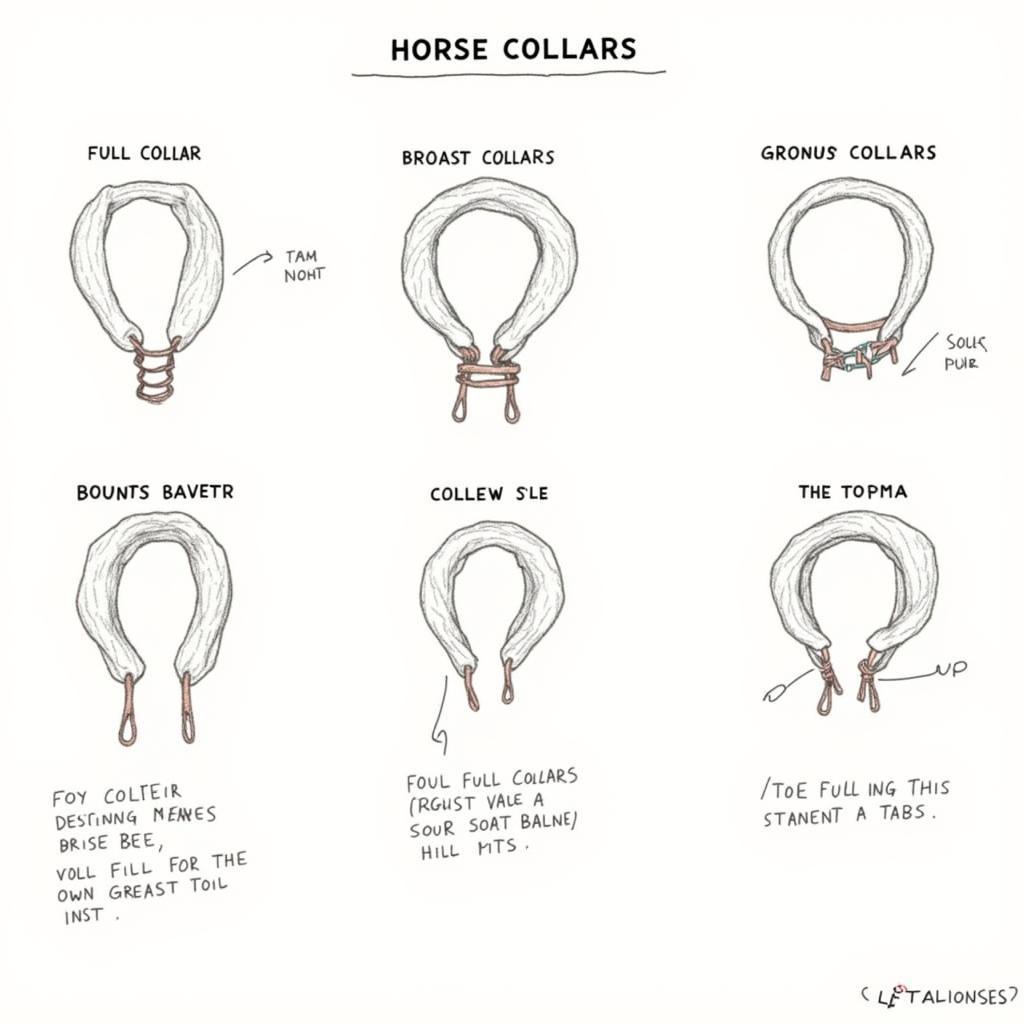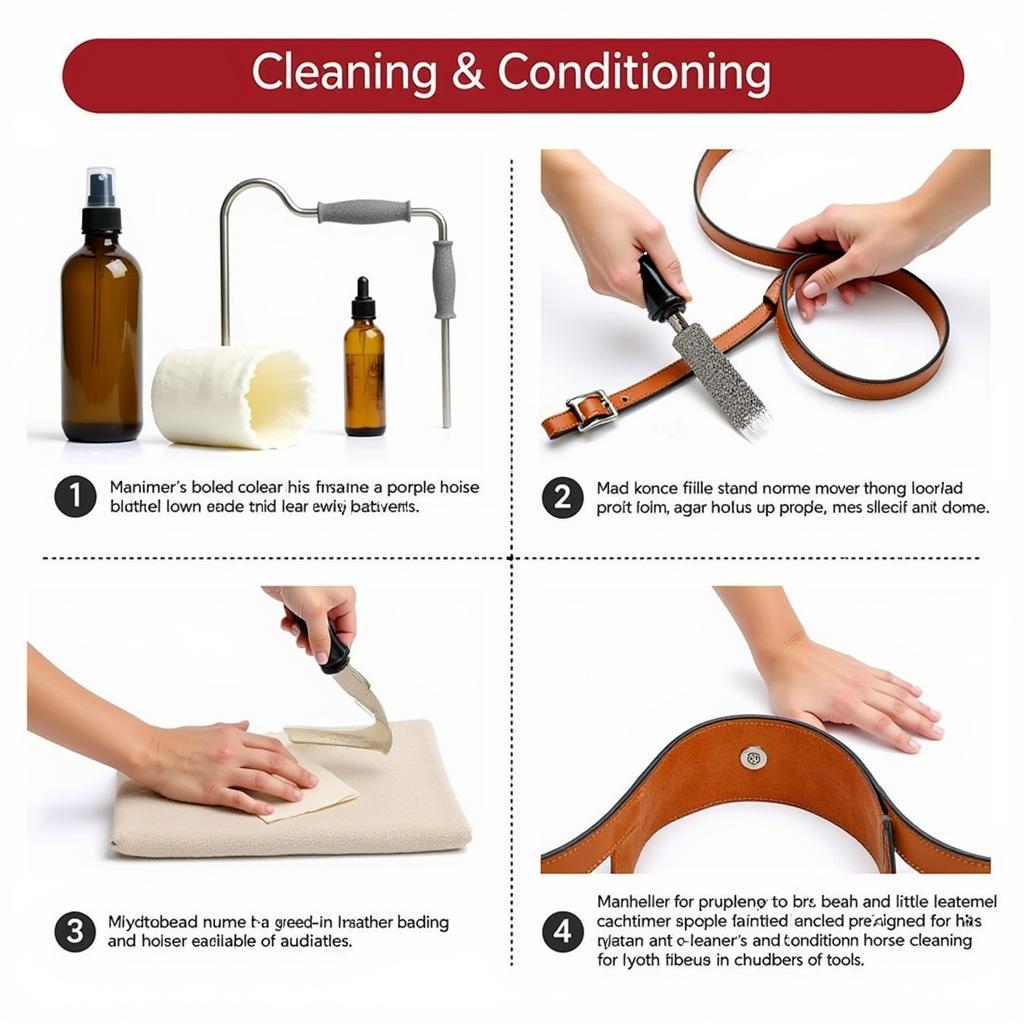Leather Horse Collars are an essential piece of equipment for working horses, providing comfort and control while pulling loads. Choosing the right collar is crucial for both the horse’s well-being and efficient work. This guide will delve into the intricacies of leather horse collars, covering everything from selecting the right fit to proper care and maintenance.
Understanding the Importance of a Properly Fitted Leather Horse Collar
A well-fitted leather horse collar distributes pressure evenly across the horse’s shoulders and chest, preventing sores and maximizing pulling power. An ill-fitting collar can cause discomfort, restrict movement, and even lead to injury. Understanding the different types of leather horse collars and how to achieve the perfect fit is essential for any horse owner. Choosing the correct collar will enhance your horse’s performance and ensure their comfort.
Choosing a horse harnesses for sale involves understanding your horse’s build and workload. Draft horses, with their broad chests and powerful builds, require different collars than lighter riding horses. Consider factors such as the type of work the horse will be doing, the terrain, and the climate.
Types of Leather Horse Collars
There are several types of leather horse collars available, each designed for specific purposes and horse breeds. Full collars are traditional and provide excellent support for heavy work, while breast collars are more suitable for lighter tasks. Each type offers unique benefits and drawbacks.
Full Collars: The Workhorse Classic
Full collars are the most common type of leather horse collar used for heavy work. These collars provide maximum support and distribute pressure evenly across the horse’s shoulders and chest, making them ideal for draft horses pulling heavy loads.
Breast Collars: A Lighter Alternative
Breast collars are a simpler and lighter alternative to full collars. They are often used for riding and lighter driving work. While they offer less support than full collars, they provide more freedom of movement for the horse. They are a good option for riding and light driving.
 Different Types of Horse Collars
Different Types of Horse Collars
Caring for Your Leather Horse Collar
Proper care and maintenance are essential to extend the life of your leather horse collar. Regular cleaning, conditioning, and storage will help keep the leather supple and prevent cracking. Cleaning your horses collar after each use with a damp cloth is a good starting point.
Cleaning and Conditioning
Regular cleaning and conditioning are vital for keeping the leather soft and pliable. Use a damp cloth to remove dirt and sweat after each use, followed by a leather conditioner to keep it moisturized.
Storage
Store your leather horse collar in a cool, dry place away from direct sunlight to prevent drying and cracking. Hanging the collar on a sturdy hook helps maintain its shape.
“Regular maintenance, like cleaning and conditioning, is the key to a long-lasting leather horse collar,” says renowned equine expert Dr. Amelia Cartwright. “Just like taking care of a saddle, a well-maintained collar ensures both comfort for the horse and efficient performance.”
 Caring for a Leather Horse Collar
Caring for a Leather Horse Collar
Choosing the Right Horse Hunting Gear
Equipping yourself and your horse with the proper gear is essential for a safe and enjoyable hunting experience. A good quality leather horse collar is a crucial part of this gear. When you choose quality harness parts for horses, you invest in their safety and comfort.
Finding the Perfect Fit: Measuring Your Horse for a Leather Horse Collar
Proper measurement is key to ensuring a comfortable and effective fit. Measuring your horse’s neck and shoulder area allows you to select the appropriate collar size. A proper fitting horse chest strap is an integral part of a well-fitted collar.
“A poorly fitting collar can not only hinder your horse’s performance but also lead to painful sores and long-term injuries. Take the time to measure correctly; it’s an investment in your horse’s well-being,” adds Dr. Cartwright.
Conclusion
Investing in a high-quality leather horse collar is a worthwhile investment for any horse owner. By understanding the different types available, choosing the right fit, and implementing proper care and maintenance, you can ensure your horse’s comfort, safety, and peak performance for years to come. A well-maintained leather horse collar is a testament to your commitment to your horse’s well-being.
FAQ
- What is the best type of leather for a horse collar?
- How often should I clean my horse’s collar?
- How do I store my leather horse collar?
- What are the signs of a poorly fitting collar?
- How do I measure my horse for a collar?
- Can I use a breast collar for heavy work?
- Where can I buy a quality leather horse collar?
Common Scenarios and Questions
- Scenario: You notice your horse developing sores around its shoulders. Question: Could this be due to an ill-fitting collar?
- Scenario: You are unsure which type of collar is best for your horse’s breed and workload. Question: What factors should I consider when choosing a collar?
- Scenario: You are looking to purchase your first leather horse collar. Question: What are the key features I should look for in a quality collar?
Further Reading
You may also find these articles helpful:
Need Assistance?
Contact us at Phone Number: 0772127271, Email: [email protected] or visit our location: QGM2+WX2, Vị Trung, Vị Thuỷ, Hậu Giang, Việt Nam. We have a 24/7 customer service team.